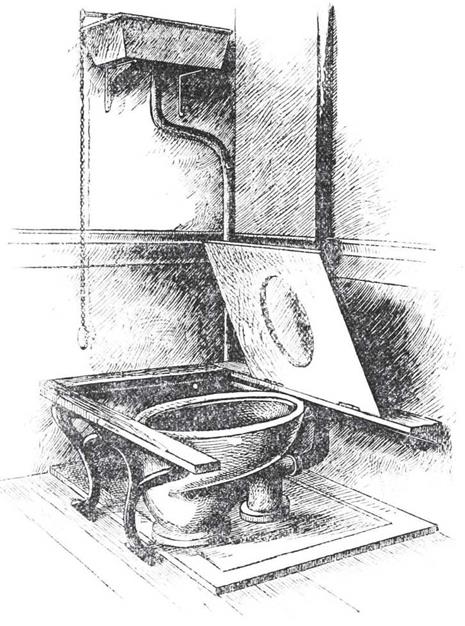The bathroom did not become common in the average home until there was a reliable supply of running water and the availability of inexpensive metal pipe and ceramic fixtures that were made possible through mass production during the Industrial Revolution. Early commodes were scarce because of the high cost to produce them by hand, so many households continued to use the outdoor privies. Before public water supplies, households used a faucet or hand pump that drew water from a cistern in the attic. Water was collected from the rain or pumped up from water sources below. The introduction of running water made it both practical and economical to bring personal hygiene activities all into the same space. With the water supply in the attic, it made sense to locate the home’s bathroom on the second floor, although many were also on the first floor next to the kitchen. The second floor location also provided the privacy that many people desired.
 |
 |
 With running water available, the next generation of water closets was a "washout" or "wash down" design that used a tremendous amount of water to flush waste away completely. The water closet that incorporated running water was the first application of indoor plumbing for the middle class (see Figure 1.4). In 1895, a siphon action water closet was developed that used vacuum action
With running water available, the next generation of water closets was a "washout" or "wash down" design that used a tremendous amount of water to flush waste away completely. The water closet that incorporated running water was the first application of indoor plumbing for the middle class (see Figure 1.4). In 1895, a siphon action water closet was developed that used vacuum action
to more efficiently flush away the waste with less water. This siphonic action is used by most modern toilets. The water closet or toilet, as we know it today, did not become a common household fixture in American homes until the early twentieth century.



